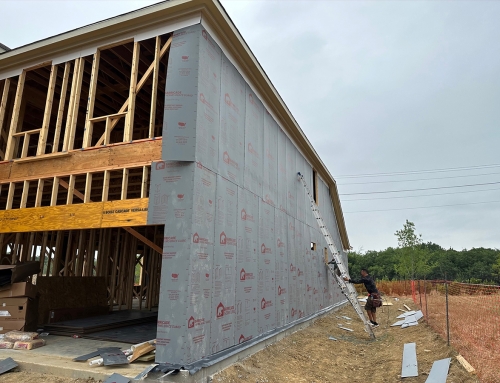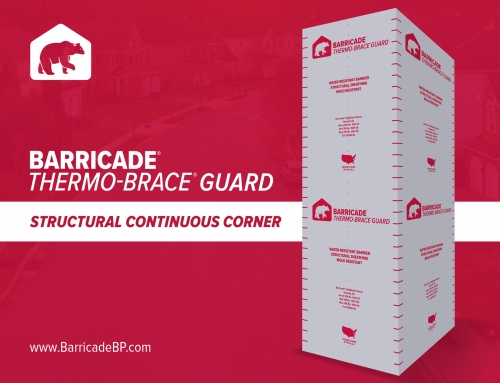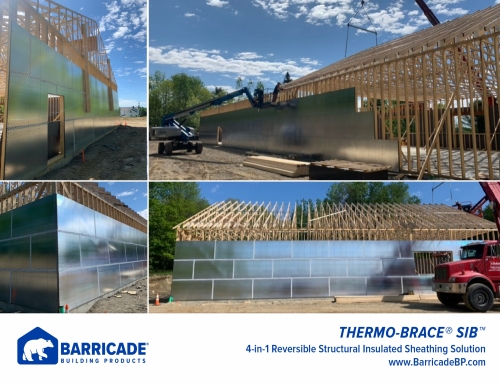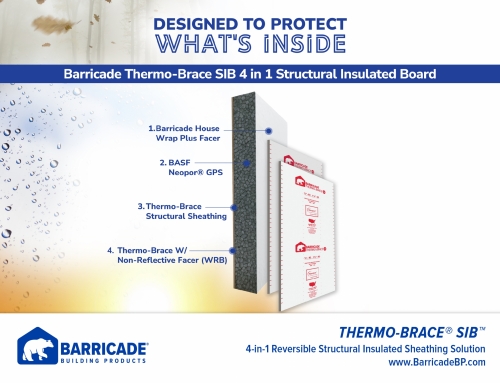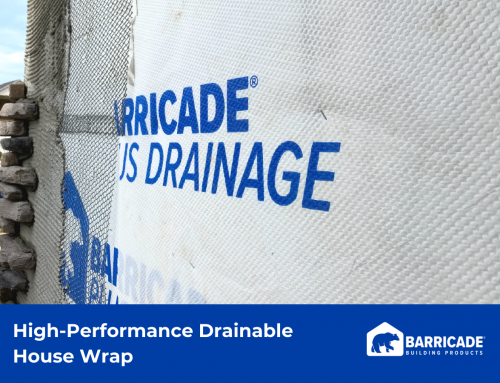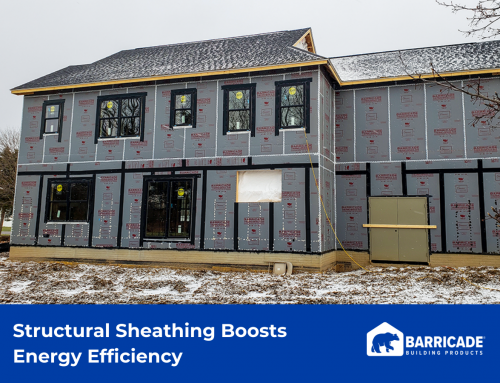Barricade® R-Wrap® house wrap provides a high level of air and moisture control and prevents water accumulation in the wall system. Both features help protect the R-value of the insulation and help ensure an energy-efficient structure.
What is the R-Value of Insulation?
The R (resistance)-factor represents an insulation product’s ability to resist heat flow through its thickness. Calculating the R-value of insulation involves multiplying its thickness in inches by its R-value/inch. The higher the R-value, the greater the thermal resistance of the insulation.
The International Energy Conservation Code (IECC) determines the requirements for the R-values of insulation needed to achieve best practices in insulating, based on eight geographical climate zones in the United States.
What Diminishes the R-Value of Insulation?
Insulation products carry R-value ratings for thermal resistance under ideal conditions. In real-world applications, this can be compromised – most significantly by moisture intrusion. In recent Intertek testing, the R-value of fiberglass installation was reduced by 55% when moisture content was at 20%. Use of a high-performance WRB like R-Wrap® can help avoid such problems, both by limiting water intrusion and allowing quick evaporation.
In addition to compromise of the insulation, the structure can lose thermal resistance by three mechanisms: conduction, convection, and radiation.
Thermal Conduction: Transfer of Heat Energy on the Molecular Level
Thermal conduction happens when heat energy moves directly through the structure from a warmer to a cooler side of a wall system. Interruptions in the insulation, by studs, windows, electrical outlets, etc. increase the wall’s thermal conductivity, allowing heat flow around the insulation. A building wall assembly’s ability to resist conduction represents its effective R-value1. An energy-efficient wall assembly should have low conductivity and a high effective R-value.
Thermal Convection: The Movement of Heat by the Flow of Air
Thermal convection occurs when heat energy flows from the warm side to the cool side of a wall by the movement of liquid or air molecules. Thermal convection can occur through the wall, roof, floor, and fenestration intersections.
Thermal Radiation: the Transfer of Heat by Solar Energy
Thermal radiation transfers heat energy from a warm space to a cooler space by electromagnetic waves (the Sun’s rays). All substances emit, reflect, and absorb radiant energy. A product’s emissivity represents its ability to radiate absorbed energy, or emit energy as thermal radiation. Builders can limit thermal radiation and improve the effective R-value of the structure by using high-reflectivity and low-emissivity products.
How House Wraps Protect the R-Value of Insulation
Applying continuous insulation (CI)2, with a high R-value, minimizes heat energy loss through a wall system. CI also promotes a comfortable and healthy indoor environment.
However, to protect the R-value of insulation, builders must apply a high quality, permeable house wrap over the sheathing and behind the siding. The house wrap protects against air and moisture infiltration by conduction and convection, especially around gaps and cracks in the CI. The wrap also permits moisture that infiltrates the wall system to evaporate. A high-quality house wrap has the strength to resist damage during and after installation to prevent air leaks.
How Barricade® R-Wrap® House Wrap Protects the R-Value of Insulation
Barricade® R-Wrap® house wrap provides a permeable barrier that protects the R-value of insulation by reducing air and moisture infiltration. Water-resistant Barricade® R-Wrap® passes all the tests used to measure a house wrap’s water resistance: ASTM D779 (boat test), CCMC 07102 (pond test), and AATCC Test Method 127. Barricade® R-Wrap® achieves a high level of air resistance, in accordance with IRC Section N1102.4.1 and IECC Section 402.4 and 502.4.
Prevents Moisture Accumulation within the Wall System
The permeability of Barricade® R-Wrap® (50 perms) exceeds the ASTM E96 mandated standard for house wraps of five perms or higher. It ensures that any moisture entering the wall system can evaporate. Removing moisture from within a wall system prevents mold, which can decay a structure and reduce indoor air quality.
Resists Damage During and After Application
The strength and durability of Barricade® R-Wrap® lessens the potential for damage that can lead to air leaks, and diminish the R-value of the insulation.
- Surfactant-resistant Barricade® R-Wrap® withstands pressure washing, job site chemicals or sugars from tree sap and wood sidings.
- Ultraviolet-resistant R-Wrap® can withstand direct exposure to the sun’s harsh rays for up to 9 months.
- Translucent, lightweight, and easy to handle, R-Wrap® lessens the possibility of damage during and after construction.
The application of Barricade® R-Wrap® house wrap, across all structural areas of a building, helps protect the R-value of the insulation. It also contributes towards a healthy and energy-efficient building or home. Please visit Barricade Building Products for more information.
1The effective R-value accounts for heat losses from all the construction products: siding, plywood, drywall, studs, insulation, etc.
2Continous insulation (CI) prevents uncontrolled airflow through cracks in the building’s envelope, which lowers the effective R-value and lessens the air quality and energy efficiency of the structure.


